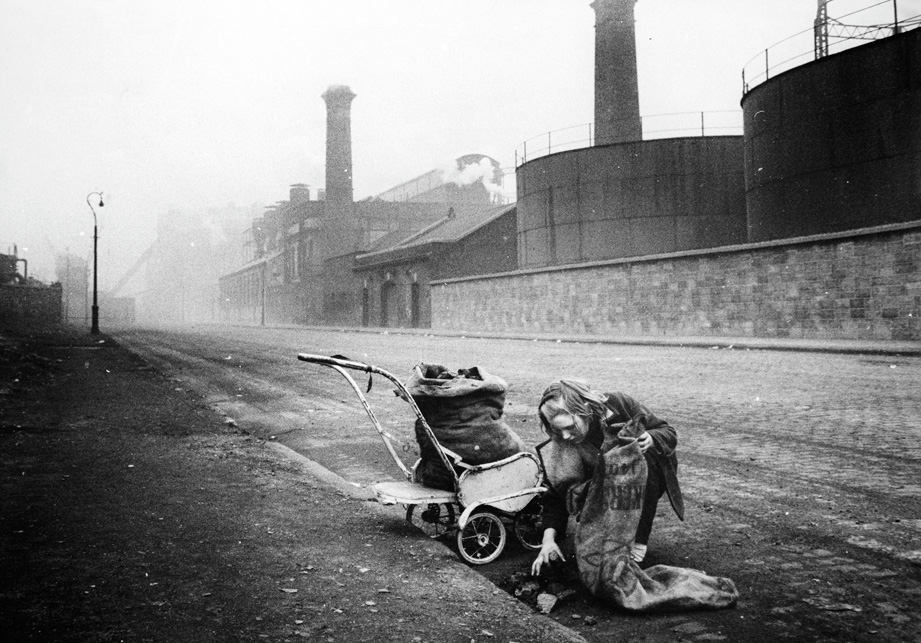by Grace Hall, photography student at DIT
I have just completed my third year as a student of photography at the Dublin Institute of Technology (DIT). The course includes not only the practice of photography, in addition to its theoretical and cultural contexts, but also the study of the archive as it relates to photography especially in terms of history. As the DIT photography course is situated in the same building as the National Photographic Archive (NPA) in Temple Bar, it has a close and significant relationship with the Archive both physically and philosophically.
The work that I carried out at the NPA was completed in fulfilment of the Stage 3 module ‘Archiving in Context’, and this module is run in conjunction with the NPA. The work I undertook offered an opportunity for me to learn about preservation methodologies and the cataloguing of photographic collections, with particular emphasis on the place of the photographic print.
Fergus Bourke died aged 70 in October 2004, after a long career as a renowned Irish photographer. There were some 494 prints in his studio and his widow offered these prints to the NPA. On receipt by the NPA the prints had all been inserted into Mylar preservation sleeves and placed in 8 drawers, but had not been sorted, listed or catalogued, and so there was no real order as to how they were stored. I started with the prints in one of the drawers, checking the front and reverse of each print and entering the details on to the database. (It was quite slow work as I had to wear cotton gloves when handling the prints, but could not type in them with the result that the gloves were on and off for every print!)
The majority of these Fergus Bourke prints are large, approximately 500 x 400mm. There are many different types of prints, some of street scenes, some of people, and some landscapes. Some of the images have titles, such as The Pickaroon above, a copy of which is one of seven Fergus Bourke images held by the Museum of Modern Art in New York. Most are untitled and appear, from their condition, to be work/test prints. Only a few are signed. Most of the prints in this drawer are either street documentary or landscape, one of the most famous being The Banshee's Grotto below.
I completed the detailed entry of the contents of this one drawer of 56 images on to the database. However, due to the limited number of hours available for the work (since the module only covered one semester), it was impossible to carry out a detailed survey of all the images. In consultation with the NPA, I decided to do a second detailed survey of one other drawer. This one contained 2 boxes of A4 portraits of people. These prints are portraits of actors, politicians, and celebrities taken in the years 1984-1991, whom Fergus Bourke had photographed with a family member, and then published in a book entitled Kindred.
As there was only time in this ‘Archiving in Context’ module for the detailed listing of two drawers out of the eight, I then carried out a brief exploratory survey of the remaining six drawers. What became clear during this survey is that there are multiple copies of Fergus Bourke images scattered throughout the drawers, and that these images fall into roughly four categories: the early street documentary images of the 1960s such as The Pickaroon; the series of Kindred portraits from the 1980s; twenty four images from his two decades as official photographer of the Abbey Theatre; and his Wicklow and Connemara landscapes such as the The Banshee’s Grotto.
Due to the discovery of multiple copies of many of the images, it was decided in consultation with NPA staff that before any more detailed cataloguing of the collection was undertaken, it would, with the exception of the Kindred portraits, be necessary to re-sort the images, placing all copies of each image together. This helps to give staff at the NPA a better idea of exactly what is contained in the Fergus Bourke Collection.
I found this collection amazing since it brought back so many memories of Ireland throughout my life. The Connemara images resonated very strongly with me, since this is a place I have returned to again and again and have also photographed many times.
The work involved was painstaking, but never dull. I never knew what I would find when I checked out an image since many had scribbled notes, drawings, plans, poetry on the reverse in Fergus Bourke’s handwriting. Also the work prints with their stains and marks all made him seem very alive to me. These marks brought home to me the importance of retaining the material image in any archive. Digitisation is great for showing the contents of an archive, but it is the material artefact with all its imperfections that carries the history of the image.
My time working in the National Photographic Archive was a truly rewarding one. The work was of a very practical nature, and what was also very interesting was learning about the work of the NPA in its wider sense, i.e. education and outreach. In particular, I liked the investigative aspect of the work. I found the ‘Archiving in Context’ module to be very rewarding and it brought alive for me the importance of an archive such as the NPA to the preservation of cultural heritage, while giving me a greater knowledge of the work involved in the creation and maintenance of such a photographic archive. I also became more fully aware of the financial constraints that exist in acquiring, storing and renovating archived objects.
In agreement with the NPA I will be spending some time over the summer sorting the rest of the Fergus Bourke Collection and completing a detailed catalogue.




